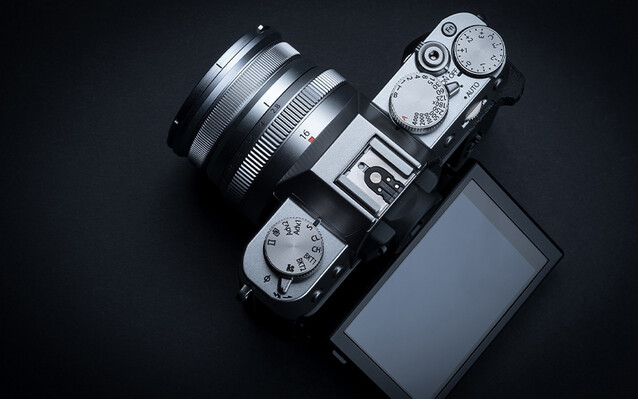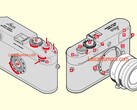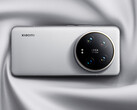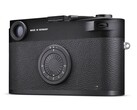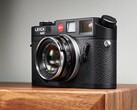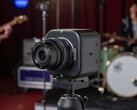1. Fujifilm X-S20 — the obvious choice
Part of what makes the Fujifilm X100VI special, and part of the reason it is sold out everywhere, is its unique combination of compactness, high image and lens quality, in-body image stabilisation, and Fujifilm's various film simulations.
The great thing about Fujifilm, however, is that all of the company's cameras come with many of the best film simulations, and Fujifilm cameras generally let you make your own. That's where the Fujifilm X-S20 comes in. It might not have the 40 MP lens of the Fujifilm X100VI, but its 26.1 MP X-Trans CMOS 4 sensor paired with the X-Processor 5 deliver basically all of the Fujifilm X100VI's features in a similarly compact package, as long as you keep the lens size in check.
The Fujifilm X-S20 isn't quite as compact as the X100VI, at 127.7×85.1×65.4 mm, compared to the X100VI's 128×74.8×55.3 mm, but it's still quite a compact package, considering it delivers better image stabilisation and video features than the X100VI.
If you're trying to replicate the Fujifilm X100VI, the Fujifilm X-S20 paired with a solid 23 mm lens, like the Fujifilm XF 23 mm F/2 R WR (curr. $449 on Amazon) is an obvious choice. However, you may have to opt for the tiny TTArtisan AF APS-C 27 mm F/2.8 Auto Focus lens to get close to the X100VI's compact footprint and are comfortable sacrificing some FOV.
The Fujifilm X-S20 paired with a $200–400 lens makes a lot of sense as a replacement for the X100VI if you are looking to buy at the X100VI's $1,599 MSRP, since the X-S20 camera body comes in at $1,299 on Amazon without a lens.
2. Fujifilm X-T30 II — a photographer's X100VI alternative
Sticking with Fujifilm again, for the colour science and film simulations, but this time looking at an older camera. The Fujifilm X-T30 II is a refreshed version of the X-T30 that has the same 26.1 MP sensor as the aforementioned X-S20 but paired to the slightly older X-Processor 4 sensor, and with more advanced features, like IBIS, stripped away. That said, the X-T30 II has many of the same analogue dials and customisable physical controls as the Fujifilm X100VI, making it a rather attractive replacement.
The Fujifilm X-T30 II retails from anywhere between $899–1,050 on sites like Amazon and B&H Photo, or used from sites like KEH for even less, which gives you more wiggle room in terms of price. So you can either save a buck or buy a better lens to accompany the camera. Given that the X-T30 II doesn't have IBIS, it may be prudent for anyone looking to do more than a little video work to get an optically-stabilised lens, like the Fujinon XF18–55 mm F/2.8–4 R LM OIS (curr. $499.95 on Amazon).
With that combination, you're still coming in at just under the cost of the Fujifilm X100VI's MSRP, but photographers can always opt for something like the aforementioned 27 mm TTArtisan lens and forego stabilisation to save nearly $300 on the lens alone.
3. Sony A6600 — a compact APS-C powerhouse
Looking outside of the Fujifilm ecosystem into other APS-C alternatives almost immediately leads to the Sony A6000 series cameras. They're powerful, relatively compact, and offer a flexible package with a growing selection of E-Mount lenses to choose from.
The Sony A6600 is compact enough — measuring in at 120.0×66.9×69.3 mm — to rival the convenience of the Fujifilm X100VI, and despite its age, it offers a feature-rich shooting experience, complete with five-axis image stabilisation on the crisp 24 MP CMOS sensor. While not seen with quite the same reverence as Fujifilm, Sony's colour science is highly regarded, especially thanks to the various picture profiles that give photographers and videographers a lot of flexibility.
If you're looking to replicate the X100VI with a Sony A6600, however, E-Mount lenses like the tiny Sony SEL-20F28 E-Mount 20 mm F/2.8 pancake lens (curr. $348 on Amazon) or the much larger VILTROX AF 23 mm F1.4 E Lens (curr. $279 on Amazon).
Given that the Sony A6600 comes in at just $998 on Amazon, the lens-camera combo comes in at well under the nearly $1,600 of the Fujifilm X100VI.
4. Ricoh GR III — a small, simple, stealthy X100VI killer
Ricoh's GR III cameras offer the best mainstream analogue to Fujifilm's X100 line-up, providing a similar form factor, although very different aesthetics, and a fixed focal length. Ricoh, however, provides two different versions of the GR III to fulfil different applications.
The regular GR III features a wide 18.3 mm F/2.8 (28 mm full-frame equivalent) prime lens, while the GR IIIx has a much tighter 26.1 mm F/2.8 (40 mm full-frame equivalent) lens. Neither is a perfect replacement for the Fujifilm X100VI, given the different focal lengths, but both versions of the Ricoh GR III are powered by a 24.2 MP APS-C sensor and have three-axis image stabilisation and a built-in two-stop ND filter to conquer bright sunny days.
Ricoh's GR III is also significantly smaller than the Fujifilm X100VI, at just 109.4×61.9×33.2 mm. This is largely due to the collapsible lens on the GR III, making it more easily pocketable than the X100VI. Obviously, you miss out on some benefits of the Fujifilm X100VI, like the built-in flash and leaf shutter for incredible shutter sync speeds. However, if you're looking for a compact walk-around camera, the Ricoh GR III can be had on Amazon for as little as $966.95, or $1,046.95 (5% off) for the GR IIIx.
5. OM System OM-5 — a Micro Four Thirds throwback
Micro Four Thirds cameras are at the top of the list for compact, feature-rich cameras, and the OM System OM-5 (curr. $999 on Amazon) delivers on its promises. The mid-range Micro Four Thirds camera features a 20 MP sensor with a 121-point hybrid AF system that combines contrast- and phase-detect autofocus for dependable speed and eye tracking accuracy.
As per usual with Micro Four Thirds cameras, the OM-5 is both small — at just 125.3×85.2×49.7 mm — and packed to the gills with features, including 6.5-stop IBIS and a decent selection of customisable buttons and dials. It's also got some handsome retro SLR styling, if you're after the Fujifilm X100VI for its vintage appeal.
The biggest weakness of the OM System OM-5, aside from being limited to 8-bit video, is its lack of a built-in flash. Aside from that, though, in combination with a lens like the OM System Olympus M.Zuiko Digital 17 mm F/1.8 (curr. $399.99 on Amazon), the OM-5 is a very capable all-round camera with a lot of the same benefits of the X100VI.





